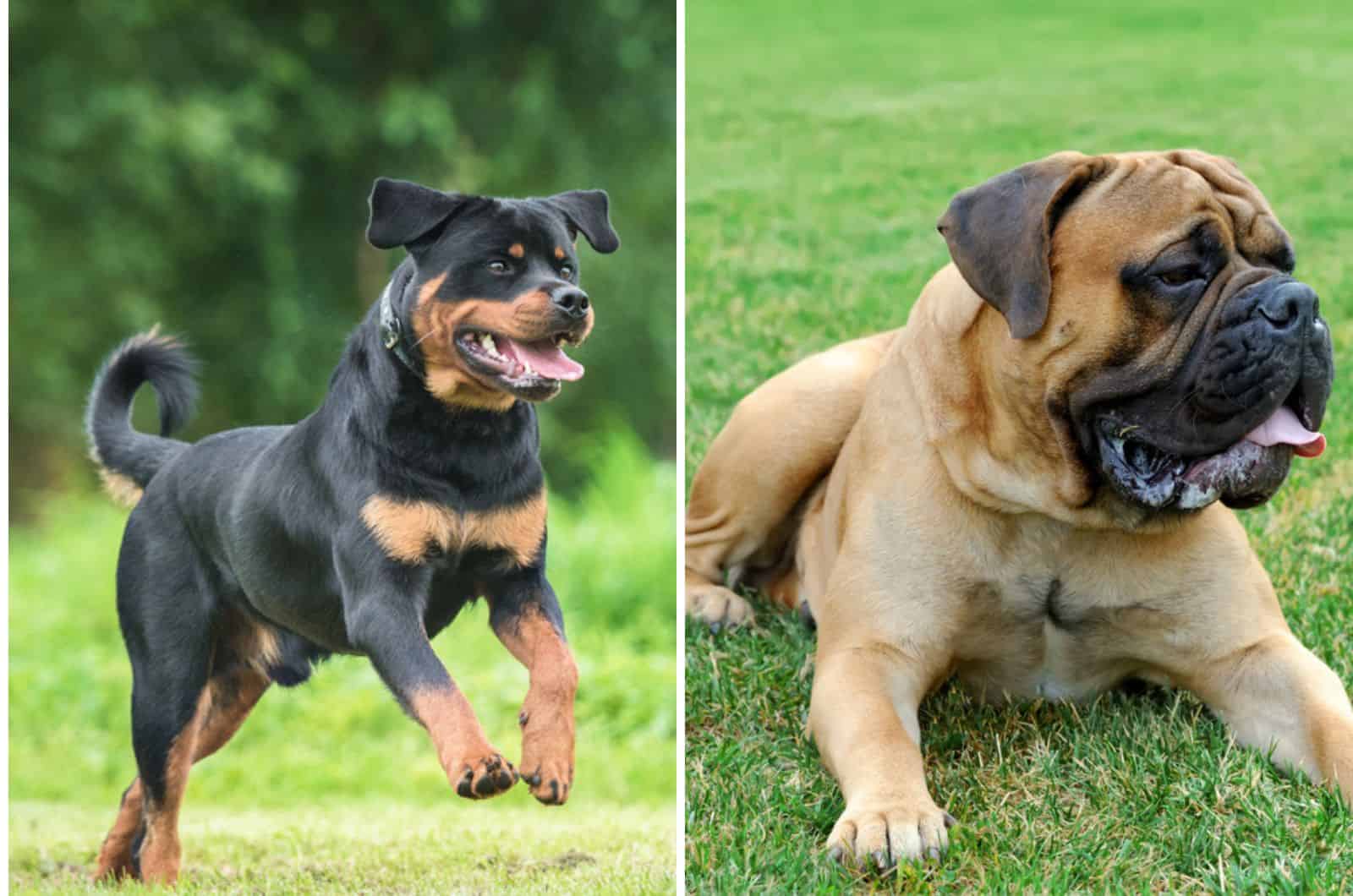Getting a crossbreed is always a way to make people guess what breed combo your dog is. With the Rottweiler Mastiff mix, people will be afraid to mention your dog. An appearance that commands authority is only sweetened by its affection towards its family.
While strangers will certainly go out of their way to look from afar, your Mastiff Rottweiler mix will be the gentlest soul in a home environment. They will pull you in with their gaze and make it so that you never wish for any other dog breed.
All mixed breeds have traits that appeal to certain people but discourage others from owning them, so keep reading to find out all things Mastweiler.
Oversized Strength, Protection, And Affection
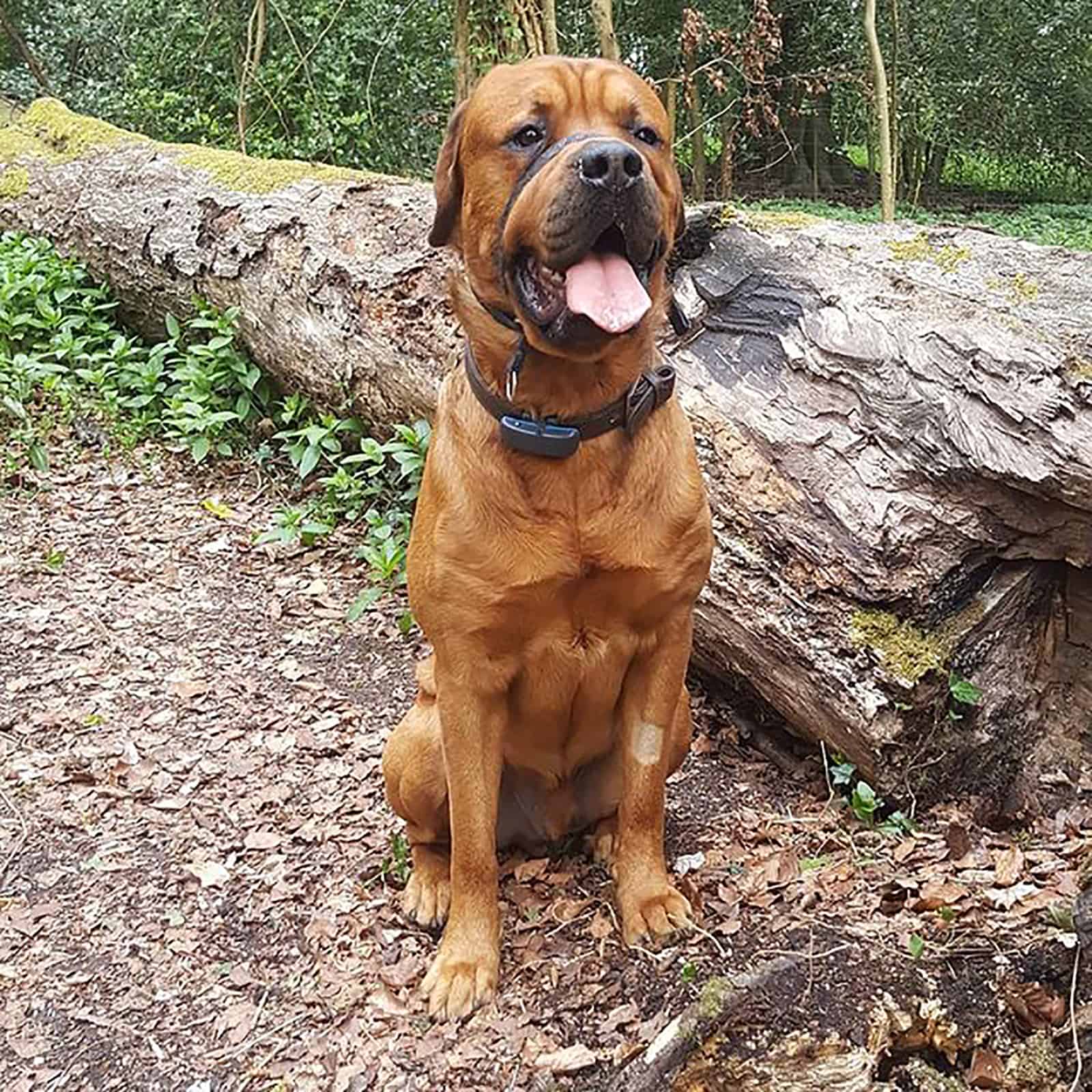
It is as if either parent breed was not strong or protective enough for the mind that decided to create this crossbreed. Two massive dogs that represent loyalty and fearlessness assembled into one body do not fail to impress.
The Rottweiler Mastiff mix is a large dog with high muscle volume, thick bones, and a distinguished guard dog instinct. It will be large, at least, because the Mastiff is a giant dog, so the possibility of that physical trait translating into the mix is pretty high.
Loyal to a fault, with an uncompromising will to protect its family, the Mastweiler is otherwise a laid-back dog that will enjoy being a sweetheart around its family members. The work ethic is inherited from both parent breeds being working dogs, and work they shall.
Owners of this mix will have no problem with grooming or training because they are exceptionally intelligent dogs. However, being strong and authoritative means that you will challenge your owner, so first-time dog owners should consider their hard-headedness.
Big bodies have big exercise requirements, and brisk walks will not be enough to maintain that colossal body mass. You will have to put in some effort in creating a satisfactory routine that targets both strength and stamina.
Curious about the exact height, weight, coat, temperament, and other details? Well, the following chapters should satiate your thirst for Mastweiler “specifications”.
There Is No Hustle Without Muscle
Rottweiler Mastiff mixes are known for their incredible strength, so the height and weight have to match its imposing mindset. The average height of a Mastweiler is between twenty-five and thirty-two inches, with a weight of anywhere from one hundred to one hundred sixty pounds.
Even more impressive is their muscular body, which comprises a broad chest and dense bones. A mix of athleticism and compactness produces impressive body proportions that fill out the hulking silhouette.
Though considered a designer dog, the Rottweiler Mastiff mix is designed for ultimate strength. Its skull is squarish with a pronounced stop, strong jawline, and a muzzle of short to medium length.
Eyes are dark colored and well-set in the eye socket, with slightly extruded brow bones. There is no tapering of the muzzle towards the nose. Triangle-shaped hanging ears have softer angling and become semi-upright when the dog is alert.
The front and hindquarters are muscular, with perpendicularly placed legs. Large feet with dewclaws are proportionate to a massive bone structure.
Mastweilers have straight backs that subtly slant at the lower back and end with a medium-length tail that is pointed at the end. It should be level with the back when moving but semi-erect while alert.
Coat Quality And Grooming
The Rottweiler Mastiff mix can have two types of coat. The smooth short coat is inherited through the Rottie parent, while the smooth double coat is a trait passed on by the Mastiff parent.
Because the quality of the coat is the same, except for the double coat, your Mastweiler puppy is guaranteed to have short hair. This crossbreed is a moderate shedder, but grooming will be a breeze.
Transitional periods will require more frequent vacuuming and hair removal from fabrics. The short hair is prickly, and people who have allergy problems might have tougher time managing symptoms with this mix around.
If you are looking for an allergy-friendly guard dog, this article on the twelve best “hypoallergenic” guard dogs will aid your search.
Coat Colors
You will be content with the color options in a Rottweiler Mastiff mix. There are several options that will look great regardless of which hue you prefer seeing on your Mastweiler.
This mix is most commonly found in apricot, brindle, tan, gold, or black coat colors. For a “designer dog”, this is not the most impressive array of color options, but this mix was never about coat colors but what it provides outside coat color.
The Rottweiler Mastiff Mix Temperament Is Not What You Would Expect
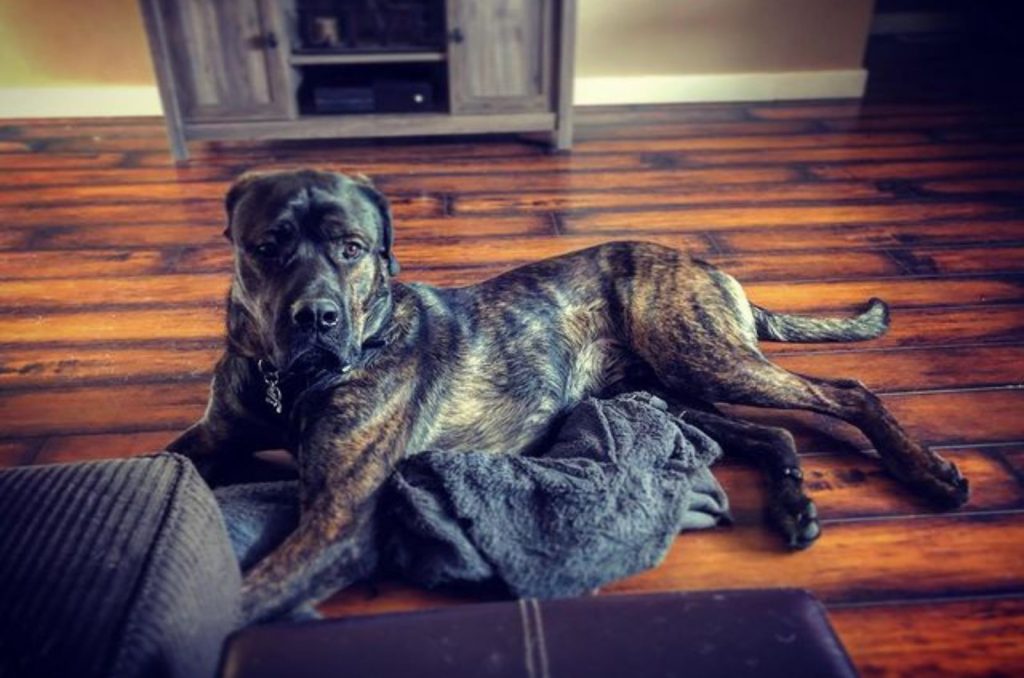
Neither the Rottweiler nor any of the Mastiff breeds are aggressive dogs. Somehow, people who have never interacted with these breeds imagine them as vicious arm-rippers, but that is far from the truth.
Their love child, the Mastweiler, is basically a giant puppy that knows how strong it is. Their confidence does not come from a place of attacking first. Instead, an assertive dog will know that its calm but imposing demeanor is enough to deter danger in most situations.
For that reason, they can be pretty stubborn dogs. Training will be easy for the most part, but it will require adequate amounts of mental stimulation to avoid it becoming boring for your Mastiff Rottie mix.
You do not want to bore a Mastweiler. It will chew, rip, dig, pull, and push anything that stands in its way. Maybe the couch says something offensive and warrants a show of dominance from your mix puppy.
Protective instincts give it a strong watchdog and guard dog predisposition. This is a perfect complementary trait to their loyalty toward the family. Do not mistake loyalty for unconditional obedience. You will have to work your socks off to earn their respect and trust.
While they are moderately energetic, you will not see them begging for playtime. They prefer structure and purpose, so an itinerary of daily exercises and walks is the most fun thing for them. Hikes can be a great way to bond, exert that energy and relax at the same time.
The mix is not known for barking except when alerting that something fishy is going on. Paired with their adaptability, this trait coupling makes them great dogs for both apartments and houses with large yards.
Socialization
Despite their enormity, they are great with children but wary of guests. People who have big personalities and express themselves loudly with lots of gesticulation will definitely not fare well on your Mastweiler’s guest list.
Other pets are not a problem if the dog goes through early socialization. If you have other dogs, you might have to invest even more time in obedience training to avoid the pent-up energy from transforming into a conflict. This will also make them bond with the other canine.
Visiting a dog park can be challenging if your Mastweiler is not properly socialized or disobedient. Make sure you take all the necessary steps to make your canine companion a balanced dog before it is an adult.
Their fearlessness is a genetic trait, but an owner who uses negative reinforcement can create problems where there are none. Rottweiler Mastiff mixes react best to positive reinforcement, so do not lose your wits if they are stubborn.
Rottweiler Mastiff Mix Diet And Feeding Habits
Large dog breeds like the Bullmastiff, Rottweiler and English Mastiff can eat a lot. This means that a balanced diet is a must. Sometimes it can be hard feeding these dogs on commercial kibble or wet food because the amount of protein is lower than required.
The Rottweiler Mastiff mix is no different when it comes to nutrients. Puppies have to follow protein-rich diets with at least thirty percent protein and nine percent fat per meal. Adult dogs require slightly less protein and a bit more fat for a well-functioning body.
Thankfully, there are home-cooked, raw, and commercial options for your Mastweiler, so you will be more than equipped with options in that regard. You can have a look at this article that talks about a Rottweiler raw diet and modify it to better fit your puppy or adult dog.
Feeding Habits
Many dog owners make mistakes that result from misinformation. Large and giant dog breeds require adequate sustenance, but that does not mean you should feed them as much as possible.
For Mastweiler puppies, it is best to feed them three meals per day to avoid digestion problems. Also, avoid raw diets if you have never had your dogs on one. Consult your veterinarian if you are considering switching to it. Adult dogs can eat twice a day.
Always count the calories given through treats as part of the daily maximum intake. Giving treats throughout the day can cause you to lose track of how much your dog actually ate. The cumulative effects can lead to your Rottweiler Mastiff mix becoming overweight or obese.
In case you notice your dog losing muscle definition but gaining weight, try following a diet plan. Here is a Rottweiler feeding chart that can be used as a guideline for your Mastweiler.
Increasing physical activity is always better than reducing calories for your dog, provided the calories come exclusively from nutritive and high-quality dog food.
Health Issues A Rottweiler Mastiff Mix Is Prone To
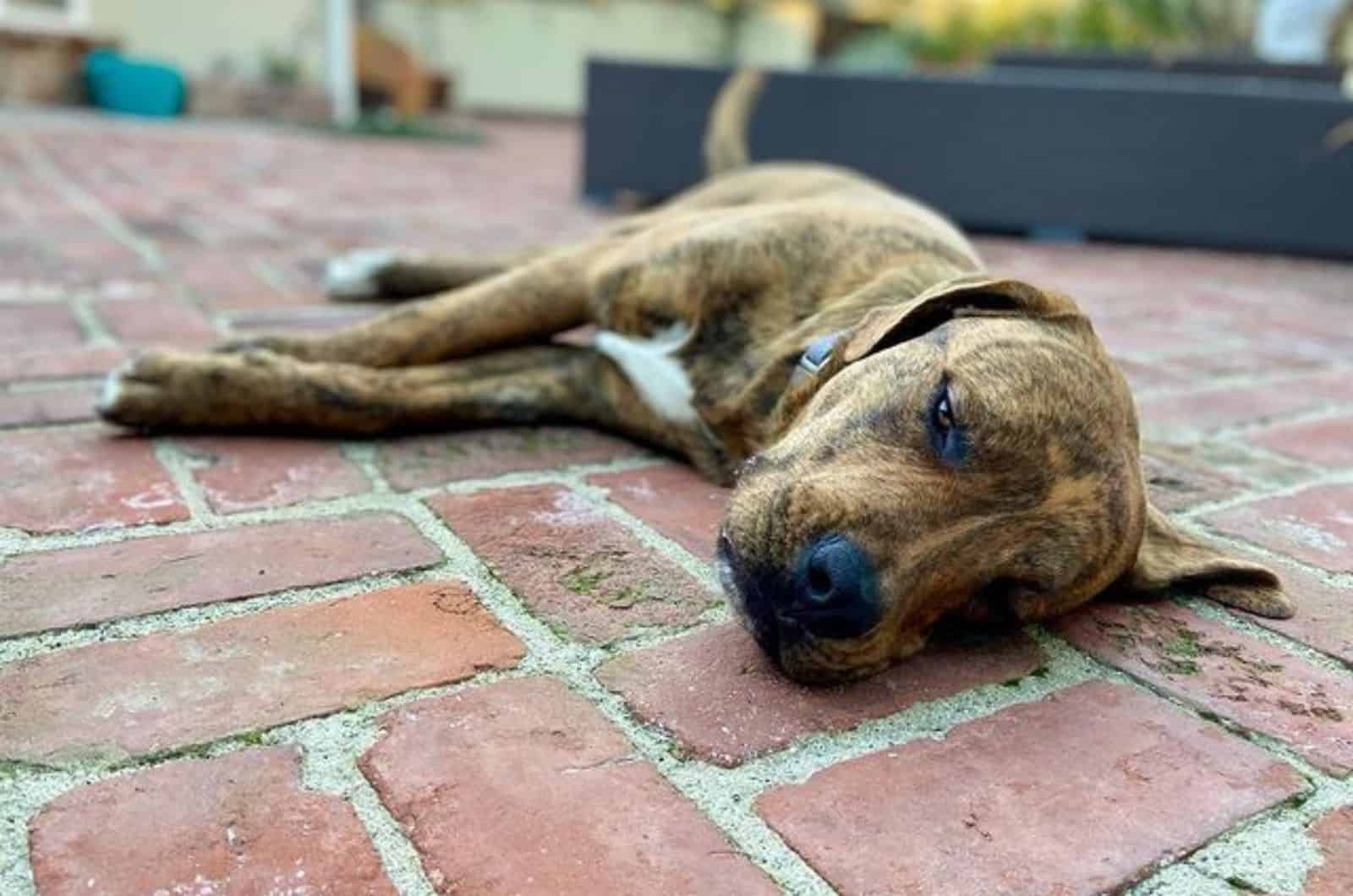
The Mastiff Rottie mix is a healthy crossbreed for a large dog but is still predisposed to some genetic diseases that plague large breeds. Good health means that your dog will live to see the upper limit of its life expectancy.
While congenital diseases are not curable, most can be successfully managed with medication and lifestyle changes. Several of the conditions on this list are common to the parent breeds too.
Breeder choice is the first line of defense when choosing this mix. If you do your research and find a reputable breeder, chances are that your dog will never have to experience any problems relating to genetic diseases.
Bloat And Gastric Dilatation/Volvulus (GDV)
This condition mostly arises from bad eating habits. Dogs that eat one large meal a day can develop bloat. If left untreated, it can progress into GDV, which is potentially fatal.
Bloat occurs when the dog eats a large meal and pockets of air form between the chunks of food. Gasses that are usually expelled through burping or farting remain trapped and start pushing the stomach outward.
The pressure can become so high that the stomach twists and closes off both exits that would otherwise be conduits of pressure relief. The rotation of the stomach is called volvulus.
This can cause great pain to your dog and put pressure on the diaphragm and heart. Without proper circulation, the dog might collapse or start panting due to the diaphragm’s elevated position.
For a more comprehensive list of symptoms and conditions related to stomach swelling, read our article on what can cause a swollen stomach with or without pain.
Immediate medical treatment that includes surgery is required in severe cases that progress from bloat to GDV. Milder cases of bloat can resolve on their own, but always be attentive to your dog’s reaction after eating.
Seizures And Epilepsy
Diseases with unknown causes are often suspected to be congenital. Inheriting a genetic predisposition for certain conditions, such as seizures and epilepsy, is more common in certain breeds, and the Mastweiler is in that category.
When seizures occur more than once, meaning they are not isolated incidents, they are called epilepsy. The condition is characterized by involuntary convulsions and is the most common neurological problem in dogs.
Trauma or injury can damage the brain structure and cause seizures too. Though this is rare in dogs, it is still a possibility. Inherited brain anomalies are the most frequent reason for seizures.
Anticonvulsants, such as phenobarbital and potassium bromide, are the usual medical therapy for dogs with epilepsy. Since there is no cure for this condition unless it is caused by external factors, the treatment will have to be administered for the dog’s entire life.
Dilated Cardiomyopathy (DCM)
Inherited from one of the parents, dilated cardiomyopathy is a heart disease that causes your Mastweiler’s heart to be inefficient at pushing sufficient amounts of blood to all parts of the body.
Other causes include infections and food, but the most prevalent one is genetic predisposition. Large dog breeds, especially Mastiff breeds, are more prone to this condition. A clean genetic health screen of the puppy’s parents is key in preventing something like this from occurring.
Symptoms associated with DCM can be body-wide and include lethargy, weight loss, increased heart rate, coughing, and arrhythmia diagnosed during a regular vet checkup.
Treating dilated cardiomyopathy is usually done through oral medication in cases that do not require emergency medical intervention and intravenous administration of cardiac medication for dogs that need hospitalization.
In dogs that develop congestive heart failure, DCM carries an unfavorable prognosis. For this reason, breeds that are genetically more predisposed to it should have regular checkups to look for hidden symptoms.
Hip And Elbow Dysplasia
Although they are muscular and strong, Rottweiler Mastiff mixes are susceptible to dysplasia. This hereditary genetic condition is easily avoidable if the breeder performs genetic health screens to ensure the puppy’s parents do not show signs of it once they are adults.
The disease onset happens in the early months of a dog’s development. Bone and cartilage growth is crucial for puppies to develop proper anatomical features, but with dysplasia, the ball and socket of the hip or elbow joint do not form a good fit.
Because of that abnormality, the cartilage that serves as a cushion between the two bones starts wearing off. When the bones start grinding against each other, the tissue will become damaged and deteriorate over time.
Other than feeling pain while moving or even sitting and lying, your dog will probably have a limp or irregular gait. This condition is not curable but is manageable with pain medication, such as NSAIDs.
Surgery is required for severe cases that have a low quality of life due to the progression of the disease. There are a few surgery types that include shaping the bones (for younger dogs) and partial or full hip replacement (for older dogs).
Entropion
This eye condition is common in Rottweilers, so the Rottie Mastiff mix can be genetically predisposed to it. The condition is defined as an inward-growing eyelid. Because of this defect, the eyelashes scratch the cornea, leading to eye damage.
The damage can cause cataracts or eye scarring, but in most cases, it is fixed with routine surgery. If genetics is the cause, then it is called primary entropion. Secondary entropion can be caused by injury, infection, dermatological conditions, and nerve damage.
If you notice your dog has one eye closed, redness, colored discharge, or excessive tearing of the eye, you should call your vet and make an appointment. Since the condition is fixable with surgery, your dog will continue its life without any issues.
Osteosarcoma (Bone Cancer)
Bone cancer is an aggressive type of cancer. It originates in the bone marrow, where it curbs the production of healthy bone cells.
However, the production of these cells continues elsewhere, which means they become foreign bodies in other organs and are not recognized by the immune system. It spreads quickly, and by the time it is diagnosed, the osteosarcoma will probably have metastasized.
Early neutering or spaying has shown to be effective in reducing the chance of osteosarcoma in Rottweilers, so the same might apply to Mastiff Rottweiler mix puppies. The age span when dogs are diagnosed with bone cancer is usually between the age of six and eight.
The most common symptoms include swelling, limb asymmetry, loss of appetite, dehydration, and some neurological signs.
Treatment depends on the osteosarcoma stage. Early stages where the tumor is of operable size can be dealt with surgically, followed by radiation and chemotherapy. If the tumor is inoperable or inaccessible, radiation and chemo can be used to shrink it and potentially surgically remove it.
However, this is fast-spreading cancer that does too much damage before being diagnosed. The most common therapy is easing the dog’s pain and making diet and lifestyle changes to extend the lifespan as much as possible.
How Long Do Rottweiler Mastiff Mixes Live?
Taking into account their moderately active lifestyle, size, and health issues, the Mastweiler has a lifespan of anywhere between six to ten years.
If you get one from a reputable breeder and provide a well-balanced diet, you should see them live closer to the upper limit of life expectancy.
What Is The Cost Of A Mastweiler?
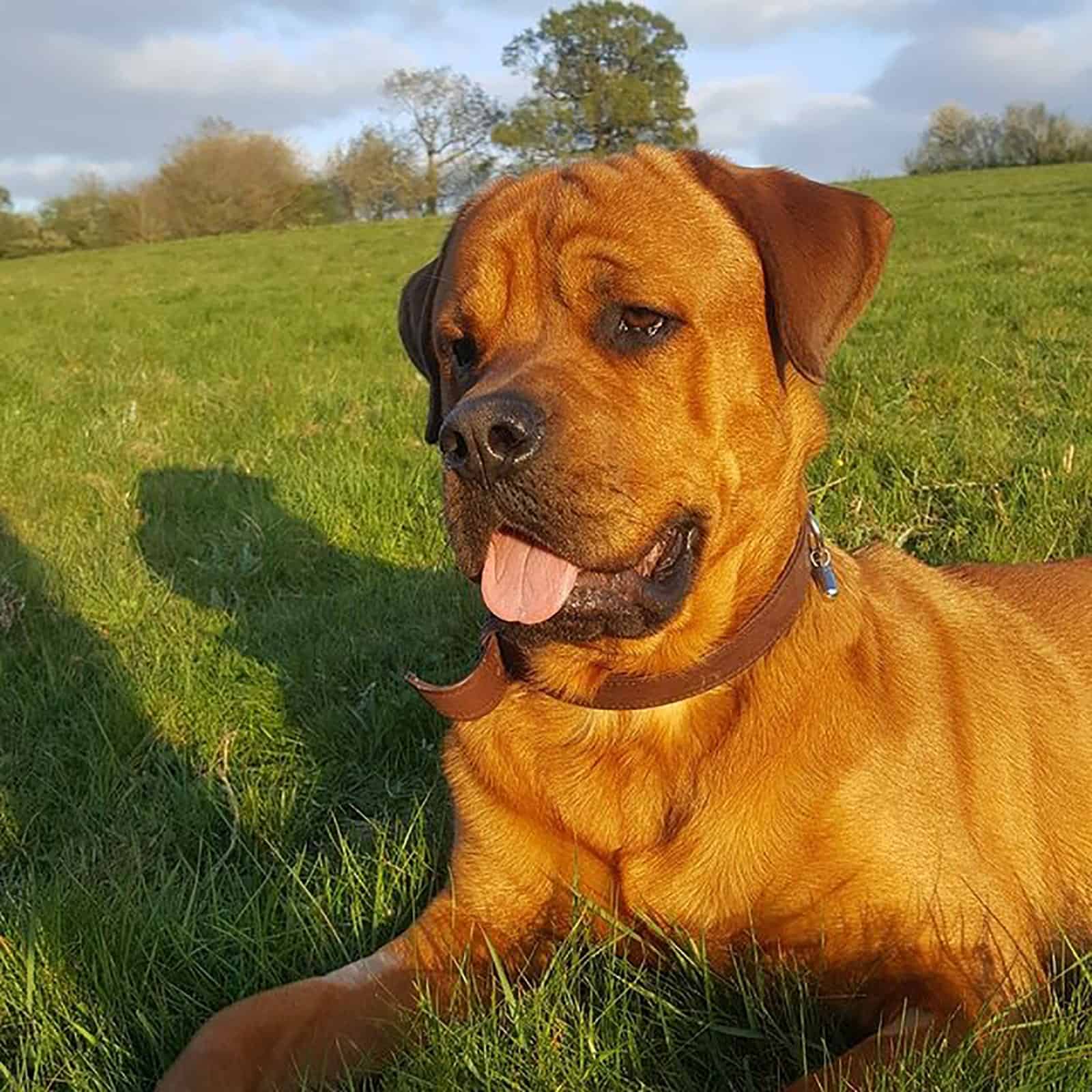
Putting a price estimate on a crossbreed is not easy. Since there are no breeders dedicated exclusively to the Rottweiler Mastiff mix, you will see different asking prices from individual breeders.
The average cost of this hybrid dog should be between $600 and $1200. This sum can vary greatly, so the best thing would be to do your own research and ask people who own a Mastweiler where they got one.
Make sure to stay away from puppy mills and backyard breeders. They will often put prices that are too high or too low to try and trick people into buying from them. Never hesitate to ask for health certificates, bloodline papers, photos of the place where the breeding takes place, etc.
What About The Bull Mastweiler?
There is another Mastiff breed that differs from the English Mastiff (or just Mastiff). A Bullmastiff, which is a Bulldog and Mastiff crossbreed produces the Bull Mastweiler when mated with a Rottweiler. This combination is quite smaller than the Mastweiler.
A Bull Mastweiler will always be under thirty inches in height. The average is around twenty-five inches in height and one hundred twenty pounds in weight. There is one other difference in physical appearance, and that is more head wrinkling than in the English Mastweiler.
Other than that, the two hybrid dogs are quite similar in physical features but differ in certain aspects of temperament. A Bull Mastweiler will be more stubborn, which makes it less trainable, and more individualistic.
Its exercise requirements are lower than the English Mastweiler’s. The protective instinct is still very high, so no compromising was done there. They are slightly worse family dogs than English Mastweilers.
What Is The Difference Between A Rottweiler And A Mastiff?
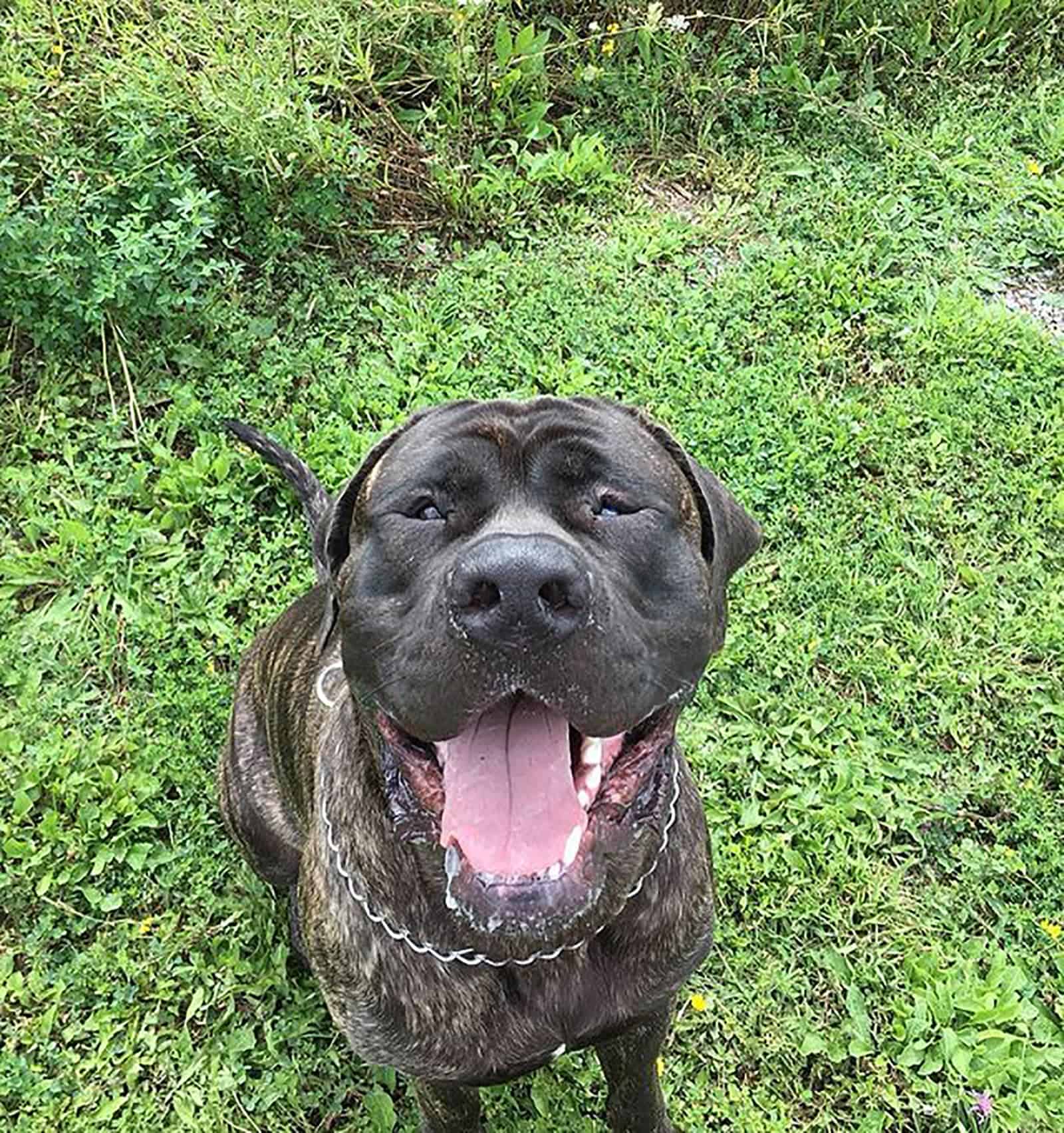
Good thing you asked. There are quite a few differences in physical appearance and more so in temperament. There is only one Rottweiler type but a few Mastiff breeds. Do not worry about anything, all you have to do is continue reading to find out.
First up — a brief historic overview of both Mastweiler parent breeds. I will be answering where they originated, what role they performed, and how they settled as human companions.
Mastiff Breeds And Their Historical Placement
The American Kennel Club makes a clear distinction between the Old English Mastiff and other Mastiff dogs that have been around for thousands of years. Some of the oldest records show that Mastiffs were popular in both Asia and Europe.
Asia has the bragging rights for the Tibetan Mastiff, while Europe’s darling giant is the Neapolitan Mastiff. They differ quite a bit, but the main difference is the long coat of the Tibetan, contrasting the Neapolitan Mastiff’s smooth short coat.
What is known as the English Mastiff dates back to when the Romans decided to expand their empire to the British Isles. Around 55 BC, Julius Cesar himself was enamored with the giant dog that helped in defense of Britain against Roman troops.
Adamant that it would prove to be useful in everyday life, he decided to bring it back to Rome and breed them. Their role was now helping hunters in taking down large wild animals and chomping on the odd gladiator in the arena.
Getting to the Mastiff of the modern day was no easy task. Their usefulness in the eleventh through the fifteenth century was recorded by Geoffrey Chaucer. These enormous dogs that excelled at guarding property and hunting big game or lions were highly sought after.
Mastiff breeding after World War Two became problematic due to the damage done, not only in terms of human lives and economies but also Mastiff population. With the help of American Mastiff breeders, the bloodlines were once again re-established, and the breed prospered.
German Workhor… Work Dog
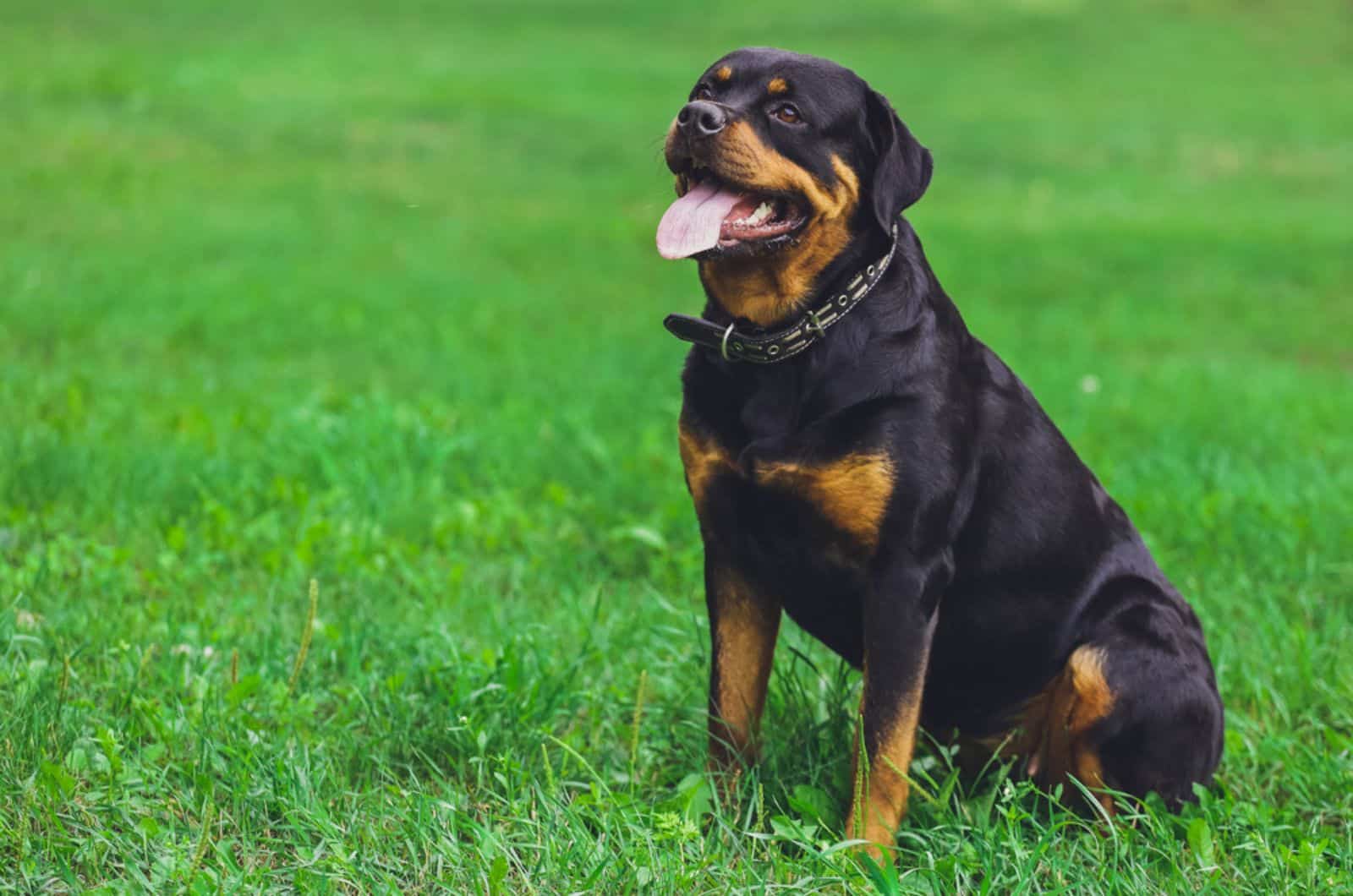
Though the first Rottweiler breed standards were established in the territory now known as Germany, the breed has its roots in ancient Rome. Mixing ancient mastiff-based bloodlines and drover dogs, the Romans managed to create the ancestral form of the modern Rottweiler.
Back then, they were considered essential cogs in the herding machine for Roman troops. Safeguarding big herds of cattle near battlefields was a daunting task that the ancestral Rottweiler performed without a sweat.
No Rottweiler attribute went unused. Their strength was a great attribute for pulling carts and sleds of resources, but their main role evolved on the back of horses, donkeys, and oxen, proving to be more adept at the task of transporting goods than a dog.
Their knack for guarding and protection did not go unnoticed. While delivering the goods was now a cattle job, the Rottweiler’s usefulness was redirected toward being a bodyguard for merchants and butchers.
As the breed approached the modern age, its role became more comprehensive and refined. Rotties were among the first dog breeds to serve as guide dogs for blind people. Building on that success, they went on to become great police and search and rescue dogs.
The Gladiators And Workers Of The Dog World
Size matters when your job is pulling carts and protecting estates and humans. This is why the Mastiff sits at a towering upward of thirty inches tall and reaches weights of one hundred sixty to two hundred thirty pounds.
The Rottweiler is shorter at twenty-four to twenty-seven inches in height and ninety-five to one hundred thirty-five pounds in weight. Both dogs have muscular bodies, with a square body frame.
Both dog breeds have short muzzles compared to the length of the skull. The stop is well pronounced in both dogs, but the Rottweiler’s ears are set slightly wider in terms of proportions to the skull.
Rottweilers and Mastiffs have hanging ears, though the Mastiff’s cover a significantly larger portion of head sides compared to the Rottweiller’s. The eyes are well set in the skull with folding on the brow in the Mastiff, but not the Rottie.
The chest in both breeds is broad and reaches down to the elbows. The massive leg bones sit at ninety degrees to the substantial shoulder mass. The back is perfectly straight in both dogs and continues to a tail that ends at a point.
Rottweiler breed standards mandate tail docking, while the Mastiff tail is left in its natural state. Both tails hang loosely when the dog is at rest, but an alert dog should keep the tail level or slightly above the spine.
Coat Quality And Color
Both dog breeds have a short coat, but the Mastiff has a double coat all around the body. This makes grooming a somewhat bigger chore than with the Rottweiler, which has an undercoat on the thighs and neck.
The Mastiff’s hair is coarse and completely covers the undercoat. The undercoat is not visible through the main coat. A furminator could be useful in transitional periods when shedding is intensified.
In Rottweilers, there are only three standard coat color combinations. The main color is always black, with the chest, forehead, and legs in a rust or tan marking. Undercoat colors are limited to gray, black, or tan. A black main coat with mahogany markings is possible too.
Mastiff coat colors can be apricot, brindle, or fawn, with a black mask as the only AKC-recognized marking. A subtle white marking on the chest is permissible.
No Messing About
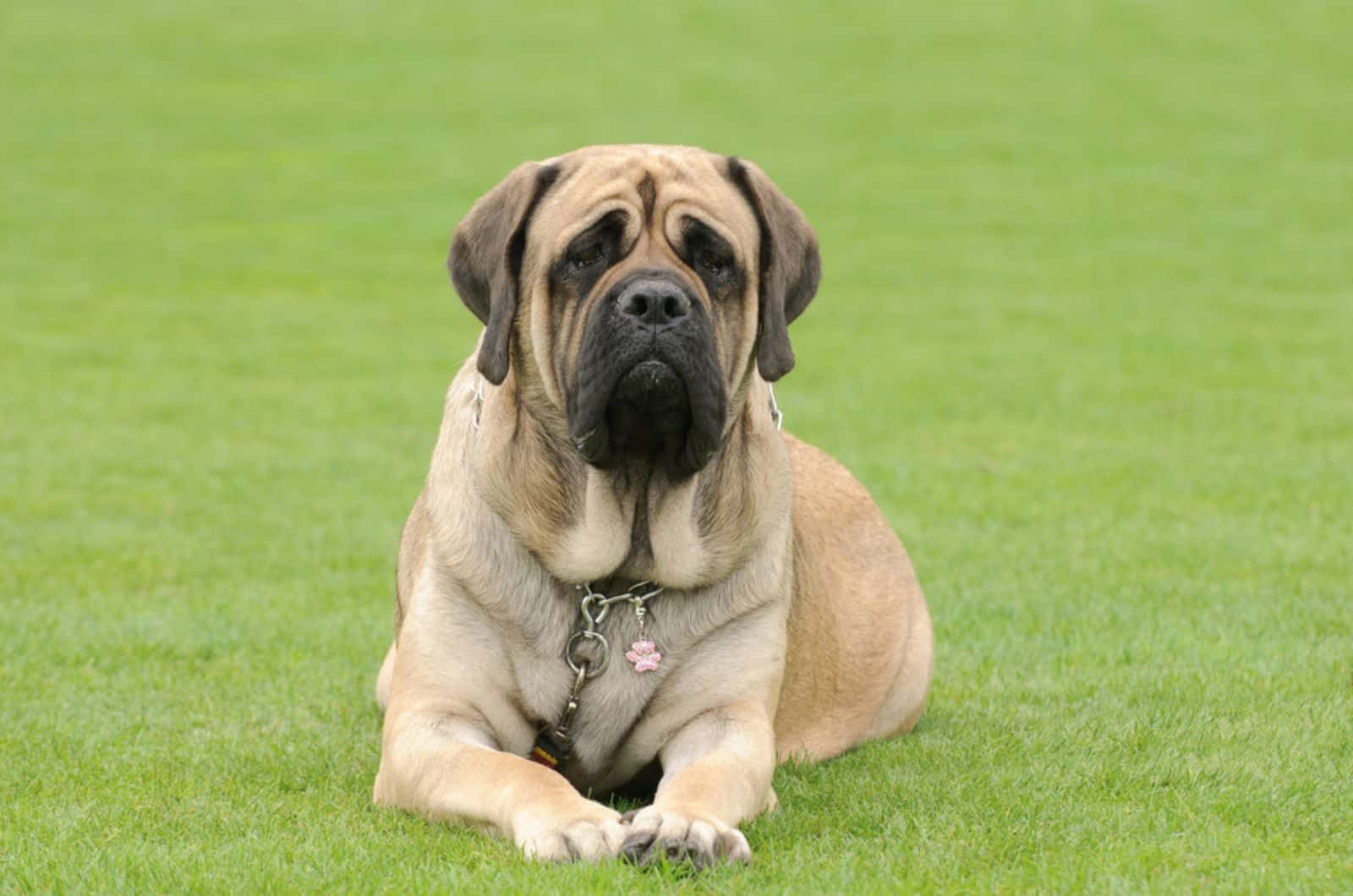
These dogs have a strong sense of purpose that is deeply embedded within their genetic code. Both breeds have very similar temperaments, but not the same. A Rottweiler will be more playful than a Mastiff, while the Mastiff will be calmer all around.
Which one is the best dog for protection is a hard question to answer. It will strongly depend on what your non-protection wishes are. If you are looking for a more energetic dog, then the Rottweiler will provide you with fun times when off-duty.
If you would rather have a dog that can lie at your feet and snooze while you watch TV, then the Mastiff would be the more laid-back candidate. Both dogs will require structured exercise plans. Walks should be a form of relaxation and not a substitute for exercise.
Interacting with children is natural for both breeds, so you are safe leaving them unattended if the dog is well-socialized and understands the family structure. Neither dog will be overly fond of strangers, so entertaining guests can be nervy for them.
Early socialization and exposure to different environments where there are a lot of people are usually enough to accustom them to being in the presence of non-family humans.
The Mastiff values alone time a bit more than the Rottweiler, so make sure small children or nosy guests do not disturb its peaceful rest. The same applies to training — the Mastiff will be less interested in obedience training than the Rottweiler.
Being the calmer of the two breeds, the Mastiff will have an easier time dealing with affection, while the Rottweiler is just a little bit more irritable. Still, a well-behaved dog that knows the pecking order will be calm with the family regardless of breed.
Having other pets live alongside either breed will be good if they were raised alongside each other. Smaller dogs that are easily excitable might not be the best pairing for a large, dominant dog.
Conclusion
Those of you who are not purebred dog fans and prefer a mixed breed dog, such as the mighty Rottweiler Mastiff mix, should find some use in this article. If you already own it and reading this article was just time-killing, then I hope I represented your dog truthfully.
Diligent research before dishing out the money is highly advised. Scammers are thriving with the increased demand for designer-breed dogs, so be careful. Most of all, be sure that you are ready for the commitment.
These dogs have specific needs in terms of physical exercise and mental stimulation. A large dog that is disobedient, unsocialized, and poorly taken care of is a guaranteed disaster.
If you do not have enough time to adequately care for this kind of mix, then you should consider a different, less difficult breed. First-time dog owners should also start their dog-friend adventures with a more easygoing breed. Read about good alternatives for family dogs in this article.
